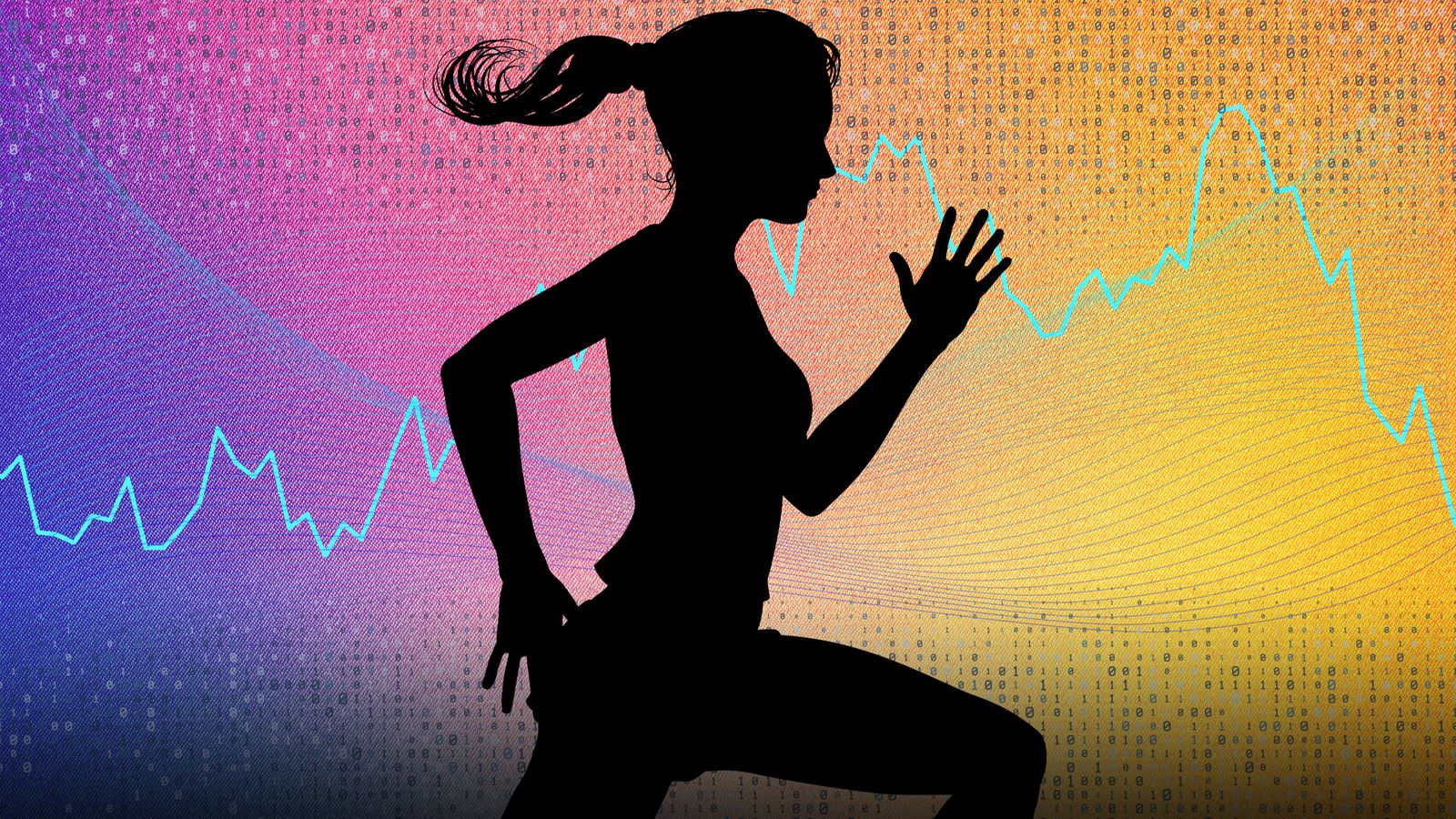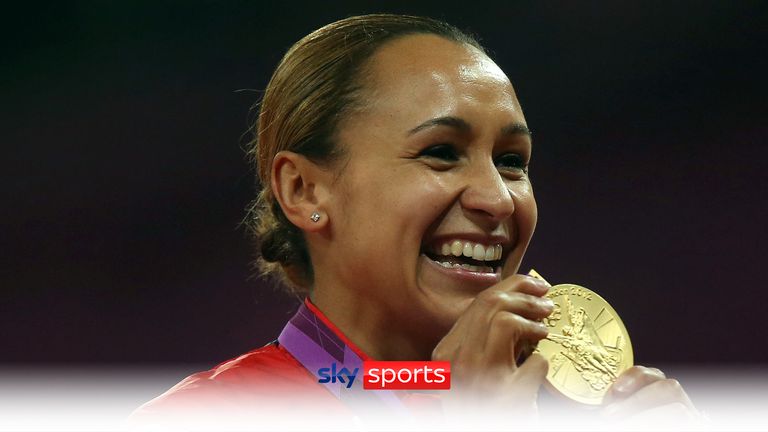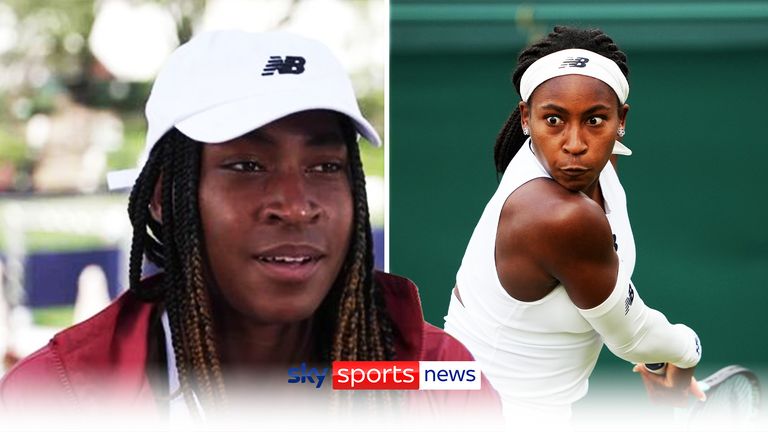It is a stark figure but one that exposes why more needs to be done to protect the health of sportswomen: in sport science and medicine, as little as six per cent of research in 2020 was conducted exclusively on females.
While women’s football’s epidemic of ACL injuries – seeing England’s Beth Mead and Leah Williamson among a number of players to miss the summer’s World Cup with the injury – highlighted the need for greater research and resources into the problem, it is not the only issue to impact sportswomen.
There are plenty of topics including menstruation, menopause, breast support and pelvic floor which need to be openly talked about and highlighted so athletes can get the best and most out of their bodies.
Leading sportswomen such as Mead, Dina Asher-Smith and Eilish McColgan are among a growing number of athletes calling for more research into how menstrual cycles affect performance.
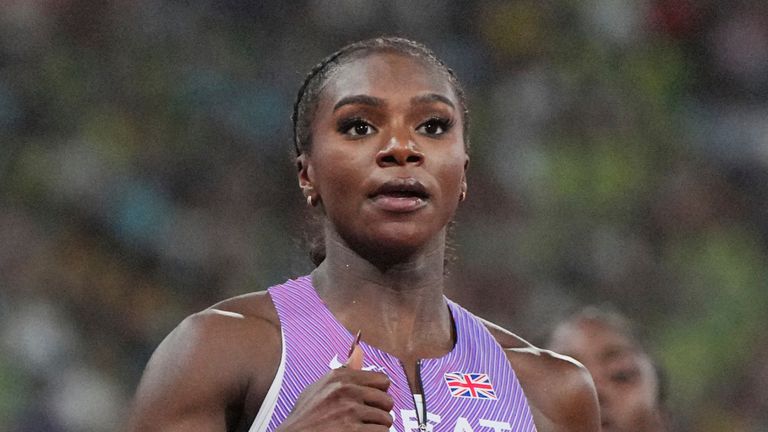
Dina Asher-Smith called for more research during last year’s European Championships
Asher-Smith pulled up in the European Championships 100m final in 2022 before revealing she had suffered cramp in both calves, something she does not suffer from regularly in races.
She told BBC Sport: “[It was] girl’s stuff. It was frustrating, but just one of those things,”, adding, “it is something which I think more people need to actually research from a sports science perspective because it is absolutely huge.”
Monitoring menstrual cycles has been under way in some areas, with Chelsea being one of the first Women’s Super League clubs to use menstrual cycle apps to tailor training in an attempt to enhance performance and cut down on injuries, and 2019 Women’s World Cup champions USWNT also tracking players’ cycles during the tournament.
Wales’ rugby team also used menstrual cycle tracking technology during this year’s Six Nations, while the Ladies European Tour has partnered with Jessica Ennis-Hill’s menstrual cycle app.
Why does this research gap exist?
Baz Moffat co-founded female athlete health experts The Well HQ alongside Dr Emma Ross and Dr Bella Smith, with the trio having released their book The Female Body Bible.
The trainer, coach and former GB rower tells Sky Sports: “Men have a daily rhythm so if you want to research carbohydrate usage over a 90-minute cycle ride, for example, it would be really easy to study that on men because you’d just get a group of 20 men, and hormonally, the same things are happening.
“A woman, on top of that daily cycle, has a monthly cycle and half the population will be on hormonal contraception, so you cannot just take a group of women off the street, so to speak – obviously most of this research happens in universities and is performed on an undergraduate population.
“So, you need more women, and that makes it more expensive, and we haven’t done it so we don’t really understand. Unless you’re a specialist in female physiology, your standard scientist would not have had this level of expertise. So, if they don’t really understand it, the tradition has been we’ll just shrink whatever we find to a woman because they are smaller. I think for too long there has not been enough understanding that we have a very different physiology, and we need to study women differently.”
‘Lack of research due to several factors’
Why so little research has been conducted solely on women is down to several reasons, says Moffat.
“With regards to research, it’s because you need more women to study them at the same time of their cycle, which means women have to know and understand it, you have to get them all aligned, so you can imagine if you’re trying to run these exercise protocols, that’s quite tricky to do,” she added.
“Also, I think women are less likely to volunteer for research, probably because they haven’t been asked to and there isn’t that culture as well. Fundamentally, it’s because we have this monthly hormonal cycle and half of us won’t be having that at all (due to hormonal contraception) and it’s hard to get that cohort.
“If it’s not part of the culture, and if you always said ‘just study the men’ to switch that, challenge that and change that, it’s quite tricky.”

A host of professionals discuss the difficulties of dealing with and recovering from an ACL injury. Plus, Gary Lewin, head of female performance services at Arsenal, explains the science behind the potentially career-threatening injury
‘Coaches need evidence presented in a practical way’
Women’s sport continues to rise – record attendances and viewership, more athletes becoming household names, increased funding and greater visibility – so how can this research gap be bridged to ensure athletes can perform to their best and help prevent future injuries?
“It can be reformed by doing more research on females but then we need to be taking the evidence that we’ve got and putting it into terms, but that doesn’t mean dumbing it down, it means presenting it in a very practical way because we need to practically apply it,” explained Moffat.
“If you read one research paper and it said ‘ok, it’s great to do more training in the first half of your cycle’, how do you do that with a squad of 30 girls? That’s what that trainer needs to know and understand. How do you do that with a squad of 30 girls and half of whom are on hormonal contraception, five of them won’t even tell me about their menstrual cycle because it’s private. How do we practically apply that? Those are the people who we are missing in the system.
Women doing more strength or resistance training sessions in the first half of their menstrual cycle results in greater gains in muscle strength compared with spacing those training sessions evenly across their cycle.
“We have very clever, brilliant academics and doctors who are doing a fantastic, fabulous job and we need them. We have coaches who coach netball, hockey and basketball, football brilliantly, we don’t have very many people in the middle that can translate this into this.
“That’s the void The Well are attempting to fill but if you talk to all the people working in grassroots sport and high-performance sport that’s what they want. They need this in language they understand but not because they are stupid, it’s because it’s a totally different language and they have real-life scenarios in front of them, they are not in a lab setting and that’s the bit we need to get better at.”
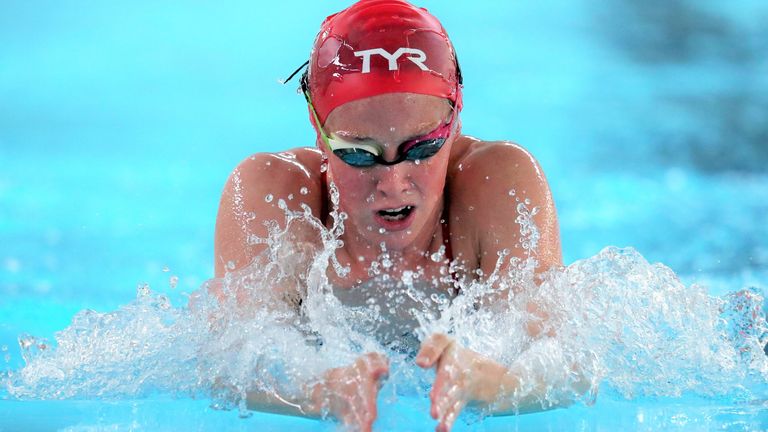
Triple Olympic swimmer Hannah Miley believes The Well HQ’s SayPeriod campaign will be beneficial for changing the language and the stigma around periods in women’s sport
This is described in the book as the ‘doing gap’. Not letting the need for more research be a barrier to putting everything we do know about women’s health into practice, not only at elite level, but also at grassroots and on gym floors.
She added: “Our approach is two-pronged – so it’s to educate the masses and influence policymakers,” said Moffat.
“It has to be mandated from global governing bodies, national governing bodies, continental governing bodies, that we need to be learning about girls and women. It’s like safeguarding, it’s like everything, as soon as it’s mandated and included, there will be budgets, personnel, there will be guidance and that has to come too as that sets the expectation which is what needs to happen.”
By wearing a well-fitting sports bra, women may be able to achieve a four per cent improvement in performance.
To put this in context, if you wore an ill-fitting sports bra and raced a marathon against a clone of yourself who was wearing a well-fitting bra, the clone would finish a mile ahead of you.
‘The communication gap’
Topics like menstrual cycles, birth control, menopause, pelvic floor and breast support are often not openly spoken about.
Wimbledon relaxed its all-white clothing rules over period concerns, which Coco Gauff had said was a “huge relief” as it made things “a lot less stressful” for female players.
Aryna Sabalenka was among several players to wear dark undershorts at this year’s Grand Slam, and said during the press conference after her first-round win against Panna Udvardy on Centre Court:
“I really like that we still keep playing in the white clothes, but I really like that we have an option for the shorts. Dark green shorts look really cool on the grass. It’s really cool to have an option at Wimbledon.”

Aryna Sabalenka wore dark undershorts during this year’s Wimbledon
Though there are conversations slowly happening, there can be barriers due to stigma, embarrassment or a lack of understanding and knowledge.
The Well HQ’s #SayPeriod campaign and partnership with England Netball NetballHER have also aimed to break down stigmas and normalise conversations on topics around the female body to improve experiences.
This ‘communication gap’ can mean women still don’t fully understand how their bodies work, and how to get the best out of them.
Women lay down all their own density by the age of 30, after which slightly more bone mass is lost than gained.
Eating a well-balanced diet rich in calcium and vitamin D and doing regular weight-bearing exercises is key to long-term bone health to avoid osteoporosis later in life.
“If people were to take one thing away from the book, I want female athletes to allow themselves to be female as well as athletes,” said Moffat.
“I think that most times, the female parts of you are deemed as a weakness and something that doesn’t have a place in your sport, or in your training or performance, whether that’s menstrual cycles, cramps, breasts that you can’t really work out what to do with, a leaky pelvic floor while doing double-unders (when the rope rotates under your feet twice per jump) – all of that stuff is really not seen as a conversation you can have.”
She added: “I think by people actually sharing what is actually happening to them, as opposed to what they’re trying to present to the world is happening to them, it massively improves and it validates people’s experiences because a lot of this stuff is shameful and full of judgement and privacy, people feel they’re the only ones it’s happening to because no one talks about it. But as soon as it’s out in the open, it really does enable people to go ‘oh that’s normal, ok then, I’m not a freak, it’s not weird, it’s happening to everybody let’s do something about it’.”

